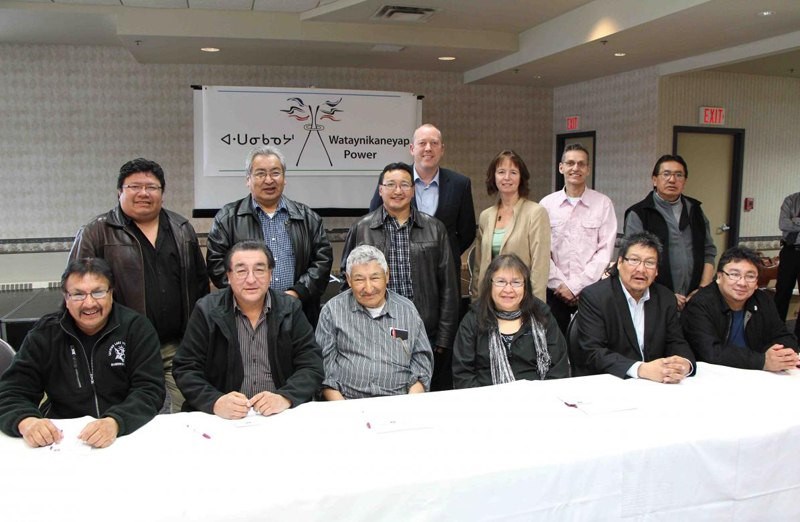A Goldcorp official says company officials hope construction on a power line to their Northern Ontario Musselwhite mine site will begin by the end of 2014.
Adele Faubert said the plan, one of two under consideration by the province and estimated to cost about $1 billion to complete, would mean adding as many as 21 First Nation communities to Ontario’s power grid.
On Thursday the First Nations communities formally signed an agreement incorporating Wataynikaneyap Power, a new company that will develop the power line.
“It’s good for the environment, it’s good for the economics of the area as well as the communities that are in the region that will benefit for generations to come,” Faubert said Friday in Thunder Bay.
The project is two-phased in nature, she added.
The southern phase is slated to begin in Dinorwic, Ont., just outside Dryden, and head east toward Sioux Lookout and up to Slate Falls into Pickle Lake.
“Eighty per cent of that area is already in corridors,” Faubert said.
Going north from Pickle Lake, the transmission line would work its way into the remote First Nations communities. First Nations signing onto the agreement include Bearskin Lake, Cat Lake, Kasabonika Lake, Kingfisher Lake, Kitchenuhmaykoosib Inninuwug, Lac Seul, Muskrat Dam, North Caribou Lake, Sachigo Lake, Slate Falls, Wapekeka, Wawakapewin and Wunnumin Lake.
According to figures provided by Goldcrop, Ontario’s 25 remote First Nation fly-in communities burn about 25 million litres of diesel each year, an estimated $68 million cost.
The long-term reliability of the transmission line would quickly pay for itself, as well as create up to 1,200 temporary construction jobs and 60 long-term career opportunities.
“We have partnered with Goldcorp to establish Wataynikaneyap Power with a goal of First Nations eventually owning 100 per cent of this important infrastructure that will better serve our communities. I look forward to the day we can connect our communities to the provincial power grid – it is safe, reliable and provides for cleaner energy,” said Margaret Kenequanash, representing the 13 First Nations partners in Wataynikaneyap Power, in the release.
Minister of Northern Development and Mines Michael Gravelle said it's a shining example of collaboration between First Nations and mining companies, who in the past have found themselves at odds over mineral development.
"It's one of a series of examples that despite some of the challenges we have with projects moving forward, this one, part of the long-term energy commitment of the province of Ontario, is a very, very important one. I was excited to see the agreeement," said Gravelle, adding he had several meetings with both sides leading up to the signing.
"To have this kind of an agreement, at the end of the First Nations communities will actually own the transmission lines, this is exciting."
Gravelle cautioned their is another proposal in the works for the transmission line, so by no means is this a done deal.
Wataynikaneyap has already begun its environmental assessment on Phase 1 and the newly formed company’s officials hope construction can be complete as early as the end of 2015. A similar environmental assessment on Phase 2 is expected to begin sometime this year.
